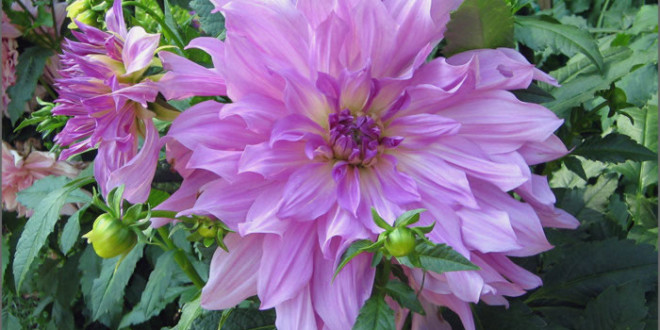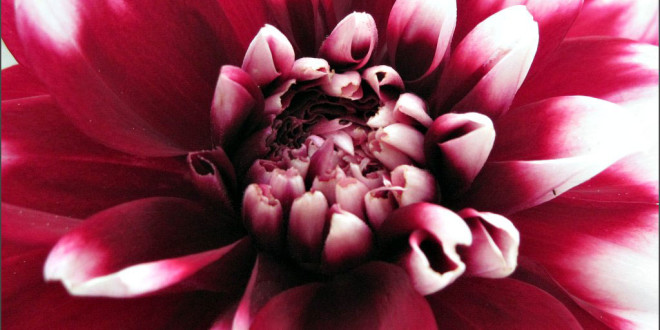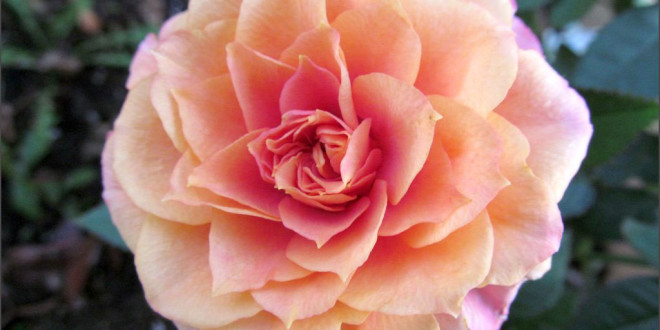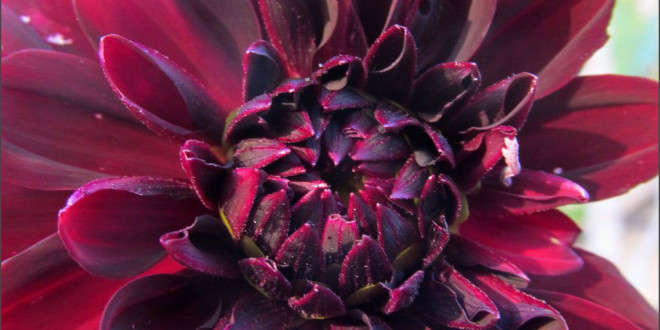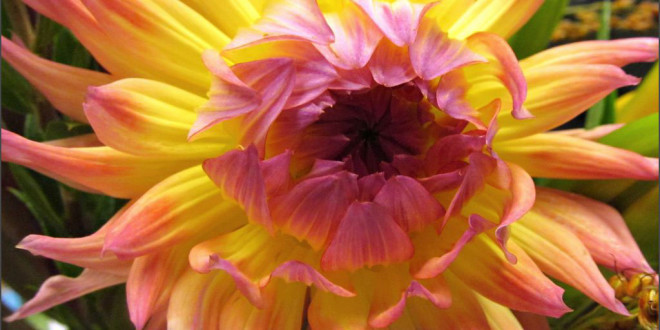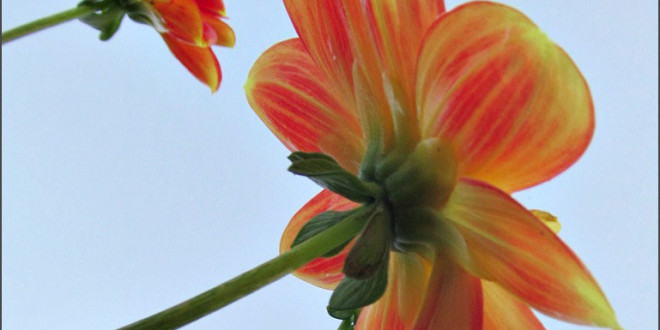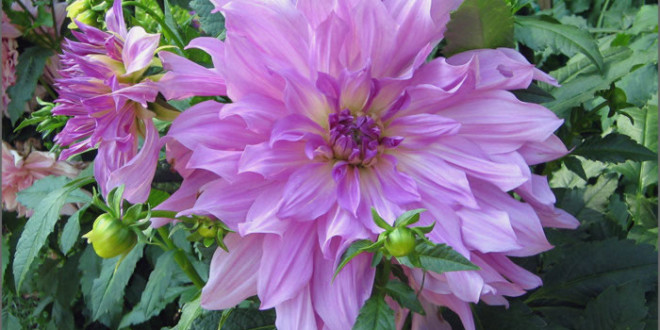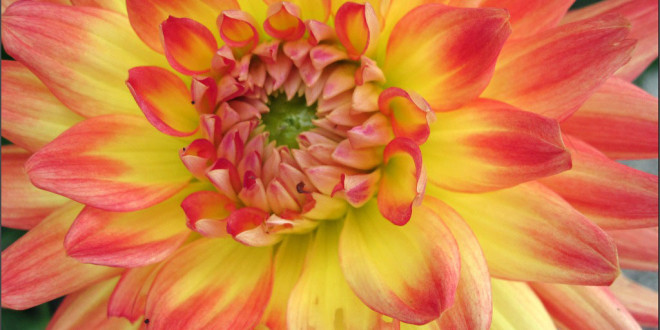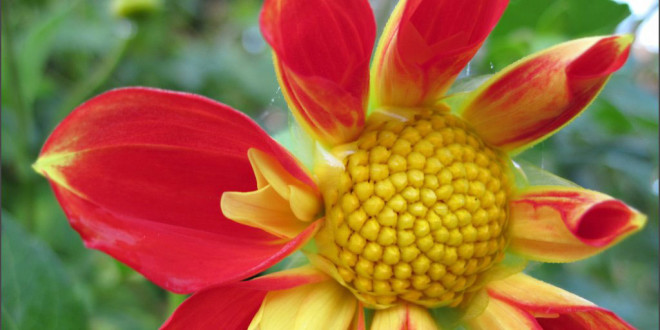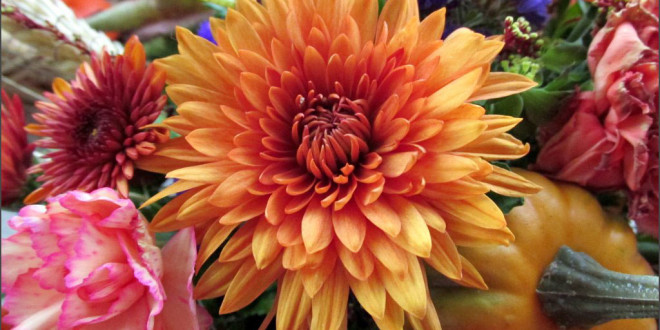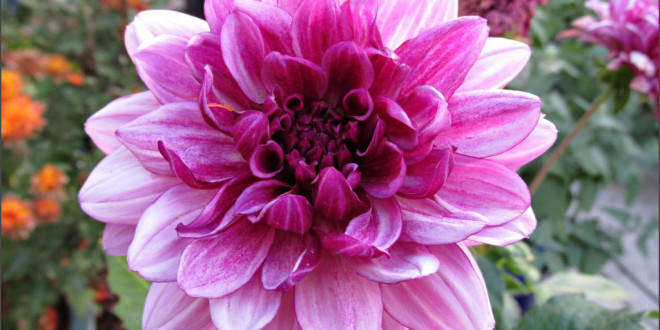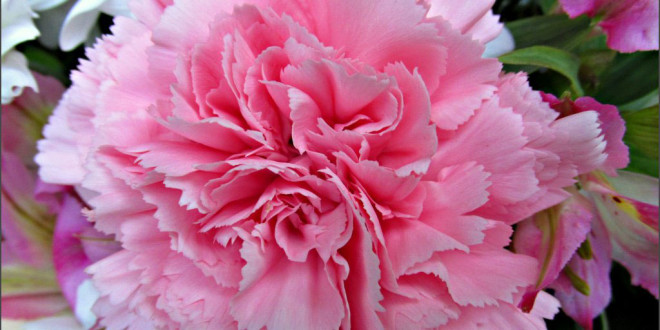These colorful spiky flowers, native to Mexico, bloom from midsummer to first frost. Each flower has one head per stem. The flowers range in color and size, from the giant 10-inch “dinnerplate” blooms to the 2-inch lollipop-style pompons.
We have grown dahlias in our Sunnyvale garden for over 20 years. If you are patient then you can treat the dahlia as a perennial by overwintering the dahlia tubers. Or you can treat them as annuals and buy new tubers every year.
The great variety of dahlias results from dahlias being octoploids—that is, they have eight sets of homologous chromosomes. In addition, dahlias also contain many transposons—genetic pieces that move from place to place upon an allele—which contributes to their manifesting such great diversity.
The majority of species do not produce scented flowers or cultivars. Like most plants that do not attract pollinating insects through scent, they are brightly colored, displaying most hues, with the exception of blue.
The stems are leafy, ranging in height from as low as 30 cm (12 in) to more than 1.8–2.4 m (6–8 ft).
Indigineous Uses
The tubers were grown as a food crop by the Aztecs, but this use largely died out after the Spanish Conquest. Attempts to introduce the tubers as a food crop in Europe were unsuccessful. The Aztecs also used them to treat epilepsy, and employed the long hollow stem of the (Dahlia imperalis) for water pipes. The indigenous peoples variously identified the plants as “Chichipatl” (Toltecs) and “Acocotle” or “Cocoxochitl” (Aztecs).
European Discovery and Export
The earliest known description was in 1570 by Francisco Hernández, physician to Philip II, who was ordered to visit Mexico to study the “natural products of that country”.
From Hernandez’ perception of Aztec, to Spanish, through various other translations, the word is “water cane”, “water pipe”, “water pipe flower”, “hollow stem flower” and “cane flower”. All these refer to the hollowness of the plants’ stem.
In 1787, the French botanist Nicolas-Joseph Thiéry de Menonville, sent to Mexico to steal the cochineal insect valued for its scarlet dye, reported the strangely beautiful flowers he had seen growing in a garden in Oaxaca.
The dahlia was declared the national flower of Mexico in 1963.
Dahlia Groups
The Dahlia Society categorizes the dahlias in 14 groups:
- Single flower
- Anemone-flowered
- Collerette
- Waterlilly
- Decorative
- Ball
- Pompom
- Cactus
- Semi-cactus
- Fimbriated
- Single orchid
- Double orchid
- Peony-flowered
- Miscellaneous
Planting Tips
- Sun exposure: Full Sun
- Soil type: Sandy, Loamy
- Flower color: Red, Pink, Orange, Yellow, Purple, White
- Bloom time: Summer
Human Toxicity
Dahlia tubers and leaves contain phototoxic polyacetylene compounds that can cause skin irritation in humans who are handling the plant’s leaves and tubers in sunlight. The plant can be toxic if eaten in large amounts, according to the North Carolina State University Extension.
USDA Hardiness Zones: 8, 9, 10
